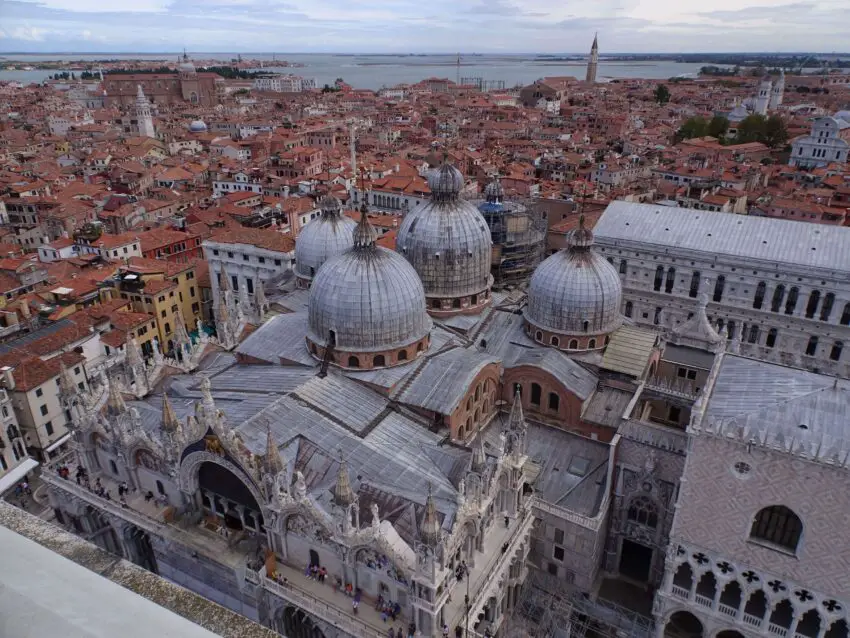There’s no doubt that St. Mark’s Square is the number one tourist attraction in Venice, which is one of Europe’s most popular holiday destinations. Dominated by the impressive red-brick Campanile and framed by the Doge’s Palace, the old Procuracy Buildings and a portion of the Lagoon, this is Venice at its most quintessential.
Still, the square certainly would only be half as attractive without the presence of the many-domed St. Marks Basilica. Constantly expanded and rebuilt from the 9th to the 13th century, the building manages to combine spacious grandeur with a multitude of playful details and is one of the sights you definitely shouldn’t miss while in Venice. Read on for everything you need to know about visiting St. Mark’s Basilica.
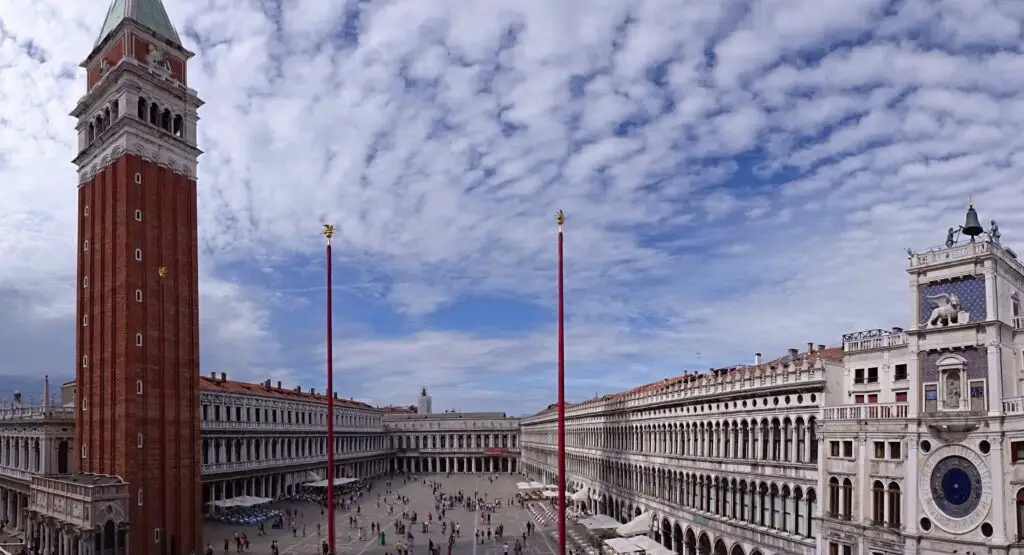
This post may contain affiliate links and I might earn a small commission at no additional cost to you. For more info click here.
What to see at St. Mark’s Basilica
The exterior of St. Mark’s Basilica
Due to the many architectural details along the façade as well as a number of domes and spires atop the roof, the Basilica manages to appear quaint despite its significant size. Both the main entrance in the western wall and the portals framing it on both sides are topped with beautiful mosaics depicting the transportation of St. Mark’s Relics from Alexandria to Venice.
Venice was a powerful force in Europe at a time and the Republic showed its might by “borrowing” objects from vanquished nations and displaying them in public places, like on the facades of St. Mark’s Basilica. The four Bronze Horses standing over the entrance at the western side of the Basilica nowadays are copies, but the originals where taken from Constantinople during the 4th Crusade in the 13th century.
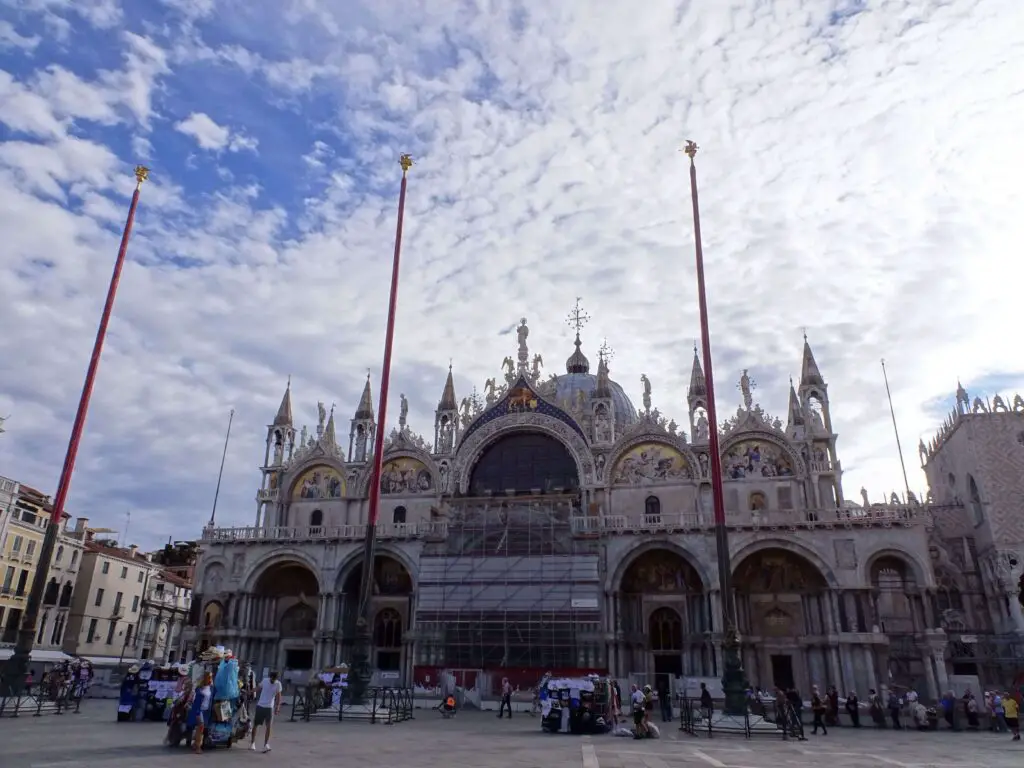
If you walk around the corner to the right in direction of the Doge’s Palace you’ll find a small group of four figures at a bottom corner of the façade. This is a depiction of the Four Tetrarchs, co-ruling Roman Emperors of the 3rd and 4th century AD. These figures were also taken during the sack of Constantinople in 1204.
The interior of the basilica has a cruciform ground plan, alluding to Byzantine Architectural traditions. As a matter of fact, the building was modelled after Church of the Holy Apostles in Constantinople, but had to be altered in parts to adapt to the necessities of the site. As the church hardly has any windows, the interior exudes a serene air due to the low lighting.
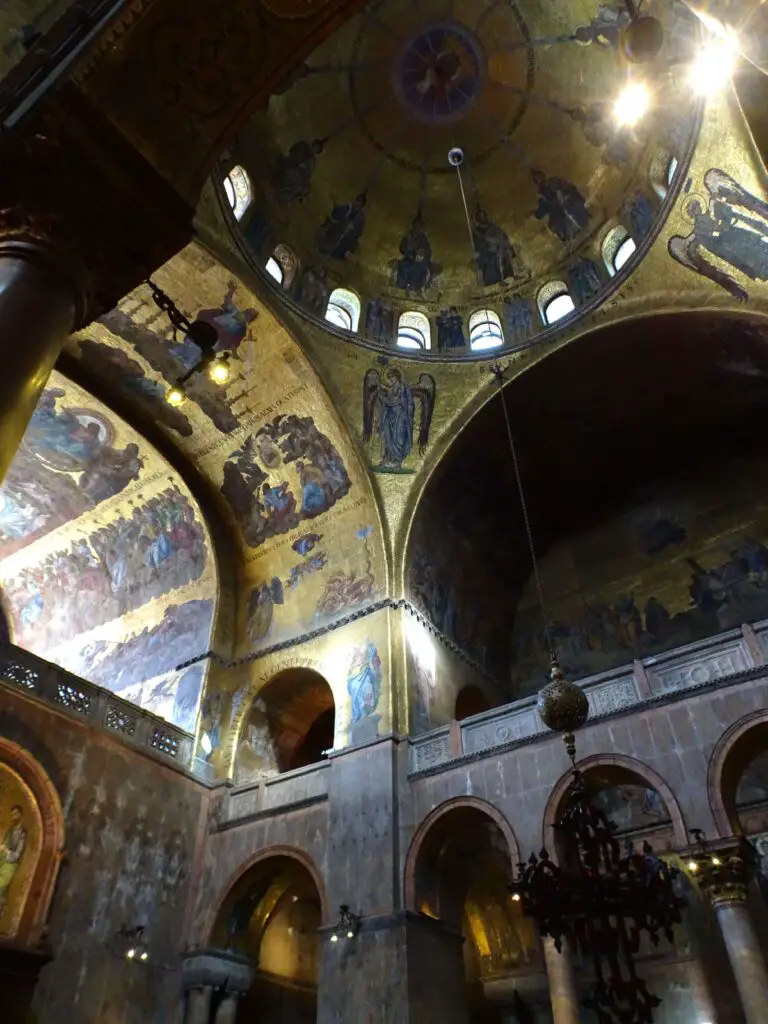
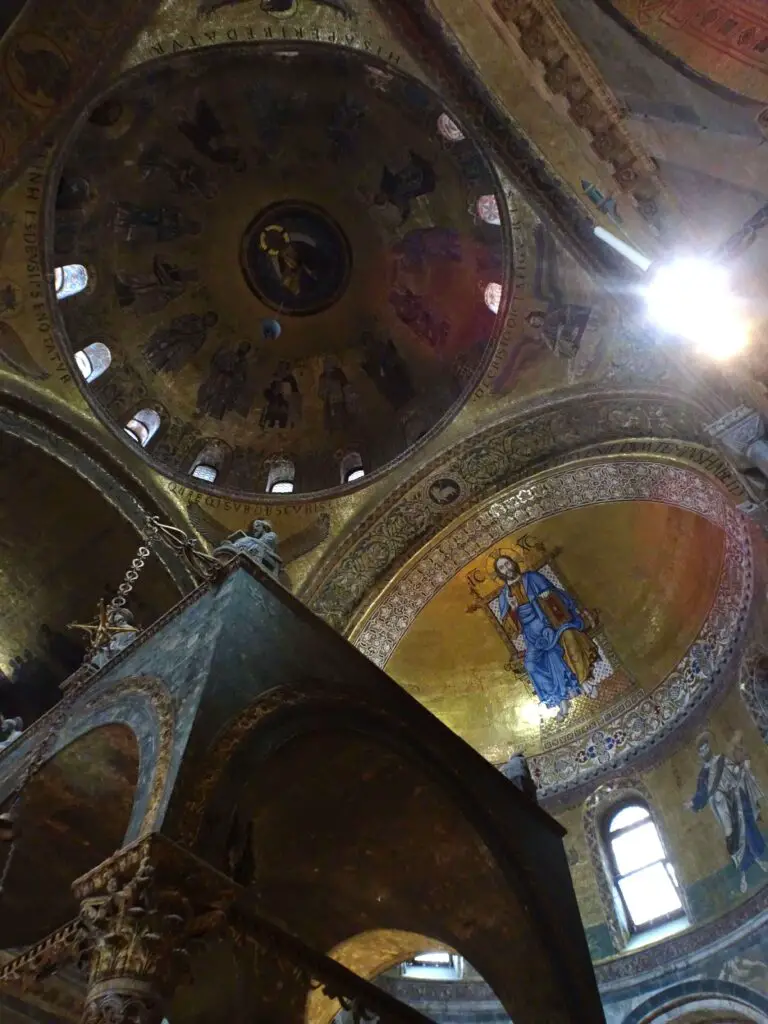
The 14th-century altar screen is topped by statues of the Twelve Apostles, the Virgin Mary and St. Mark. The five big domes topping the nave are covered in ornate mosaics, also following contemporary Byzantine art conventions. They depict various Biblical scenes, including a detailed scene of the Creation.
The Presbytery and Pala d’Oro
Entrance to the Presbytery (the area surrounding the altar) requires an extra fee, which I my opinion is well worth paying as this is arguably the most attractive part of the Basilica. The high altar containing the relics of St. Mark is covered by a Ciborium, whose pillars are covered in intricate reliefs depicting scenes from the Lifes of Jesus and Mary.
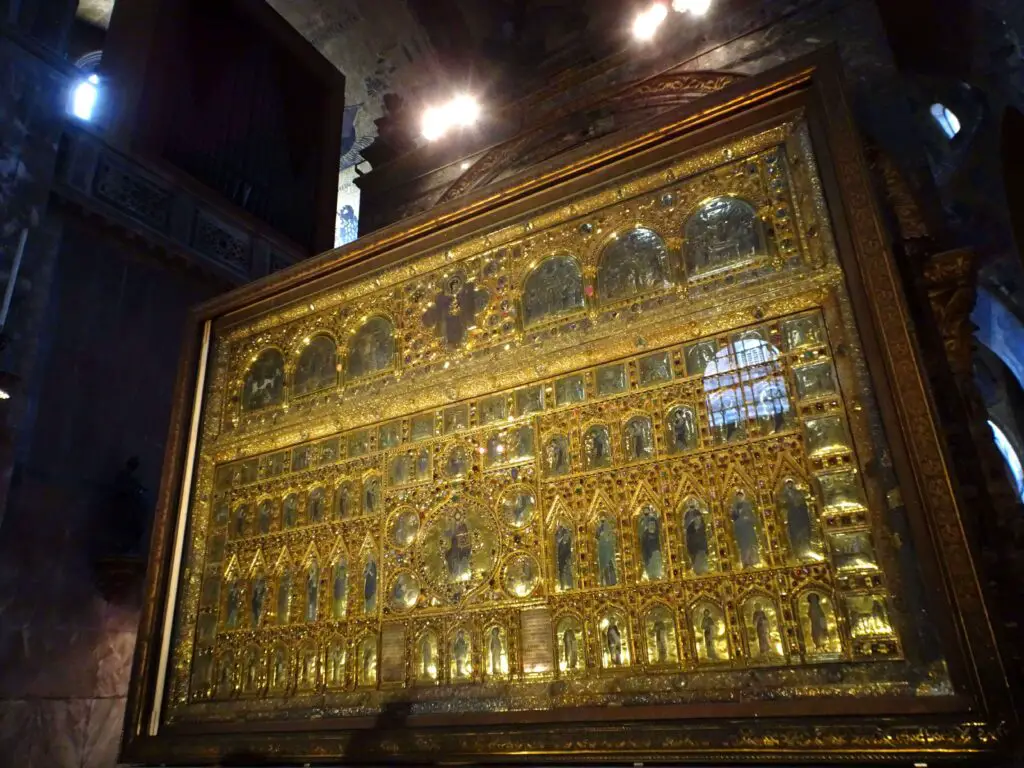
The real star attraction in this part of the church can be found behind the altar, though. The Pala d’Oro (eng. Golden Cloth) is a huge decorated 14th century screen made from Gold, Silver, Enamel and almost two thousand gems. The incredibly intricate design contains depictions of various saints and angels surrounding a central panel portraying Jesus.
It’s an impressive sight, even if the enjoyment is slightly hampered by the masses of jostling people in the small space behind the screen. Bring a bit of time, so you can have a decent look in between all the smart phone screens held up to take fuzzy pictures of the screen.
The Museum of St. Mark and Loggia dei Cavalli
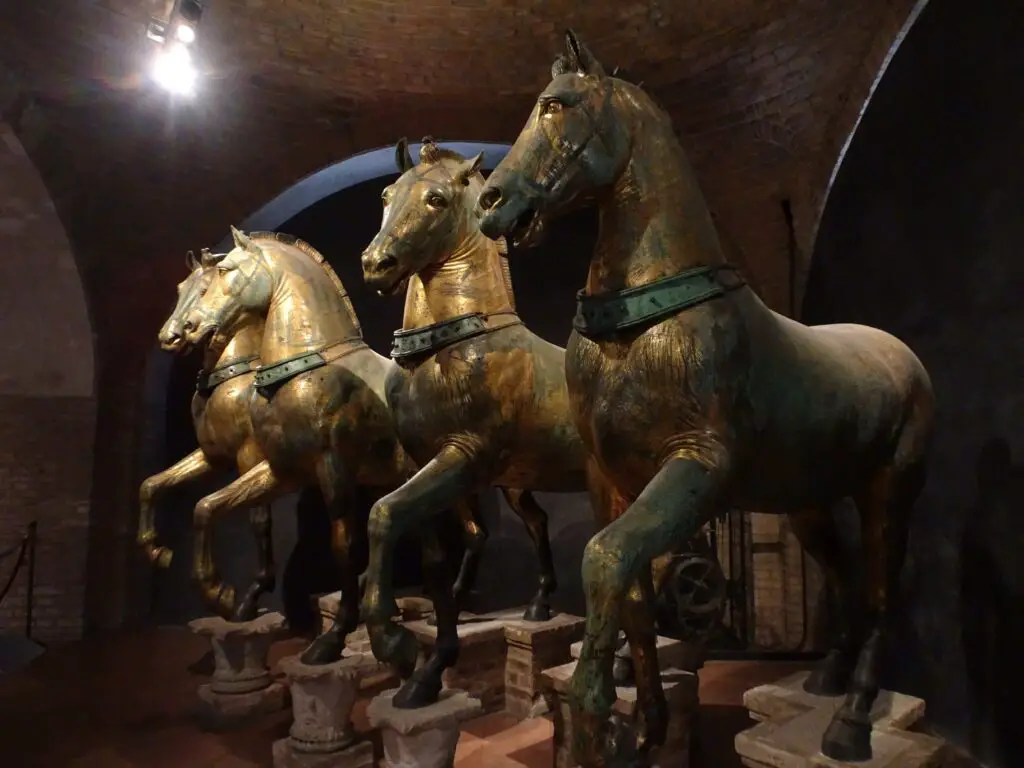
The small St. Mark Museum contains some interesting mosaic fragments and religious tapestries, but for us the best part of visiting it was the chance to step out on the Loggia dei Cavalli, the balcony along the western side of the church. As you might expect, the Loggia offers a fantastic view of St. Mark’s Square, while you can have a close look at the copies of the four Bronze Horses that the Balcony is named after.
The originals of the surprisingly lifelike sculptures can be found inside the museum, where you also have a chance to walk along the gallery to see the nave from above. Also, have a look at the huge family tree of the Virgin Mary painted on the northern wall on one of the balconies.
The Campanile
The Basilica’s Clock Tower sits slightly apart from the main building, as is often the case with Italian Cathedrals of the time (Think of the Leaning Tower of Pisa). At 98.6 m (323 ft), a visit to the top affords great views of the square, the Basilica and the Lagoon. There isn’t even any climbing involved, as visitors are zipped up to the Viewing Platform by elevator.
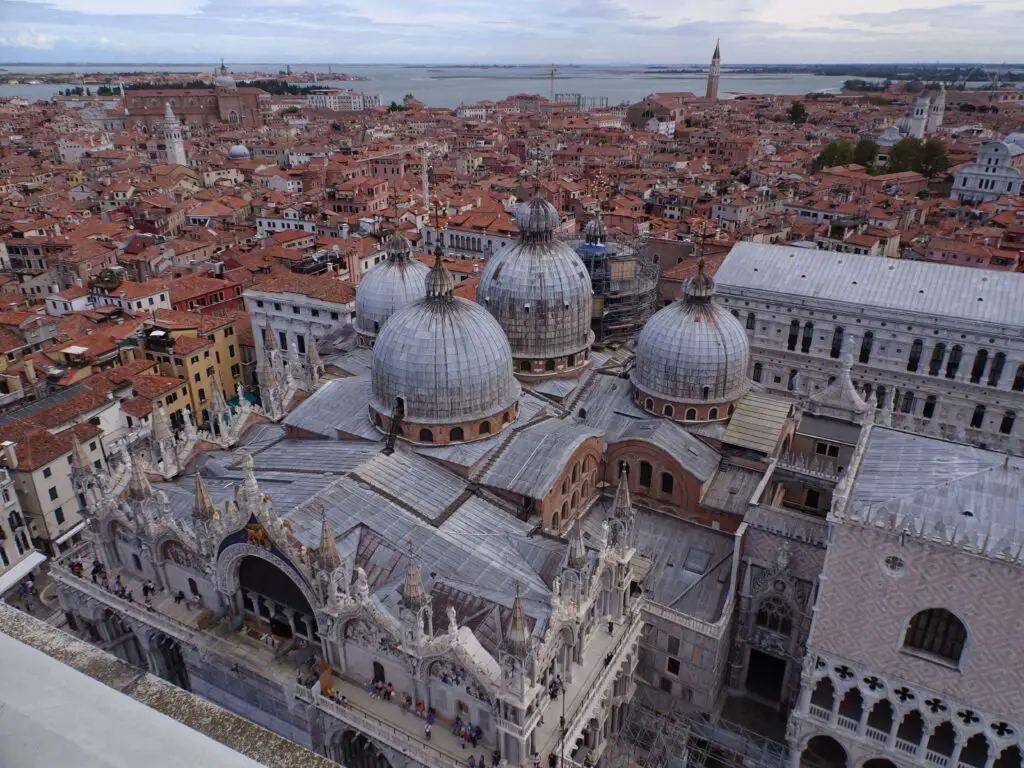
The tower has had quite an interesting history, especially as it collapsed in 1902. Ten years later it was rebuilt in its original medieval form. The tower itself dates to the 10th century, while the spire and belfry have been added in the 12th century. The golden figure atop the spire represents the Archangel Gabriel.
The Tower is open from 9.30AM to 9.15PM daily with the last admission at 8.45PM.
Practicalities
How much is the entrance fee for St. Mark’s Basilica?
The entrance fees vary greatly depending on what exactly you want to see. The general entrance to the basilica costs 3€, while access to the Presbytery and Pala d’Oro is 5€. The museum and Loggia de Cavalli is 7€ and a visit of the viewing platform atop the campanile is 10€.
The Basilica can be visited for free during prayers, Mass and Services from the Porta dei Fiori at the north side. However, you can’t really explore the area during that time (especially not the wonderful Presbytery) so you might want to consider coming at a different time and paying the 3€ general admission instead.
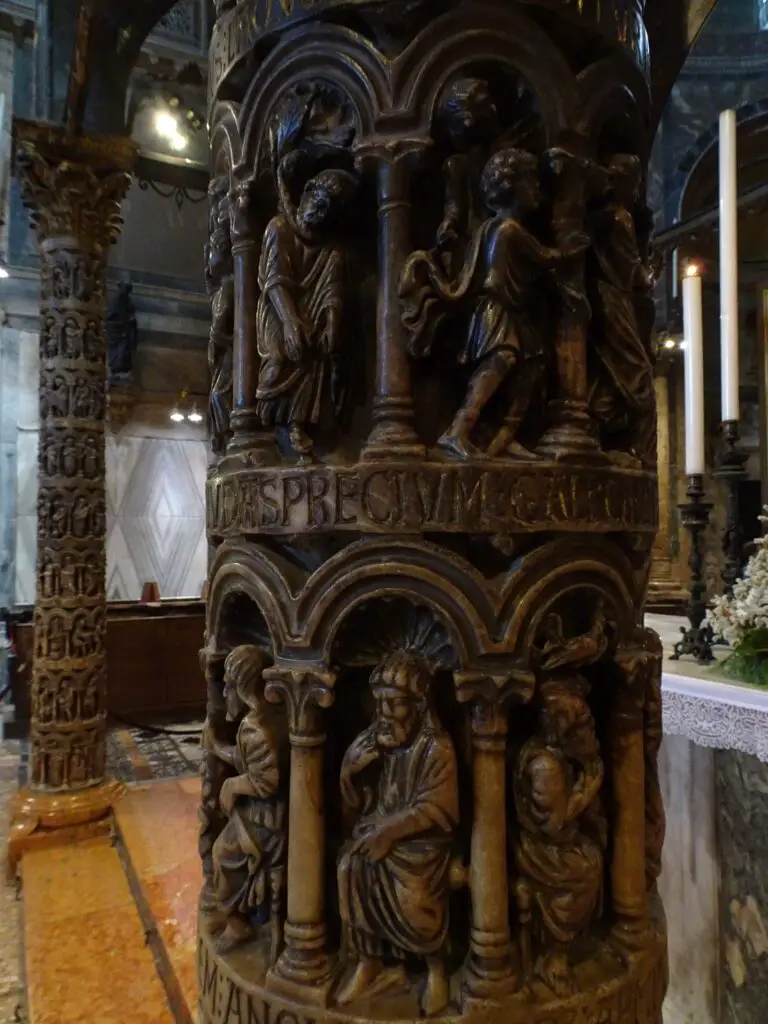
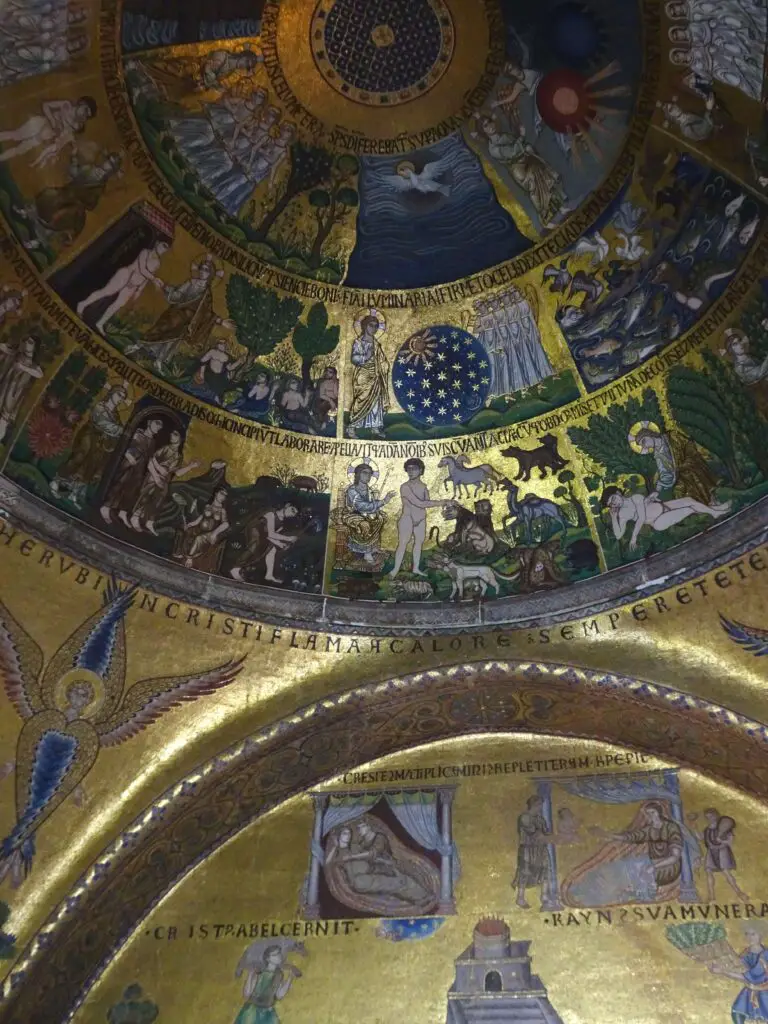
What are the opening times of St. Mark’s Basilica?
The Basilica is open from 9.30AM to 5.15PM from Monday to Saturday and from 2PM to 5.15PM on Sundays and Religious Holidays. Last admission is at 4.45PM. You can double check the Opening times here.
When to visit St. Mark’s Basilica
Apart from the Rialto Bridge and the Doge’s Palace, this is probably Venice’s most famous sight and some people will line up starting about an hour before opening time, so expect plenty of company, no matter when you visit. We still found it better to come in the morning as the lines seemed even longer in the afternoon. Another good time is probably in the last half hour before it closes at 5.15PM (The last entrance is at 4.45PM).
If you don’t feel like waiting in line, you could get a skip-the-line ticket like this one.
How to visit St. Mark’s Basilica without the crowds
If you want to enjoy this unique place in peace, you might want to consider taking a tour outside of the regular visiting hours, like this After-Hours Tour.
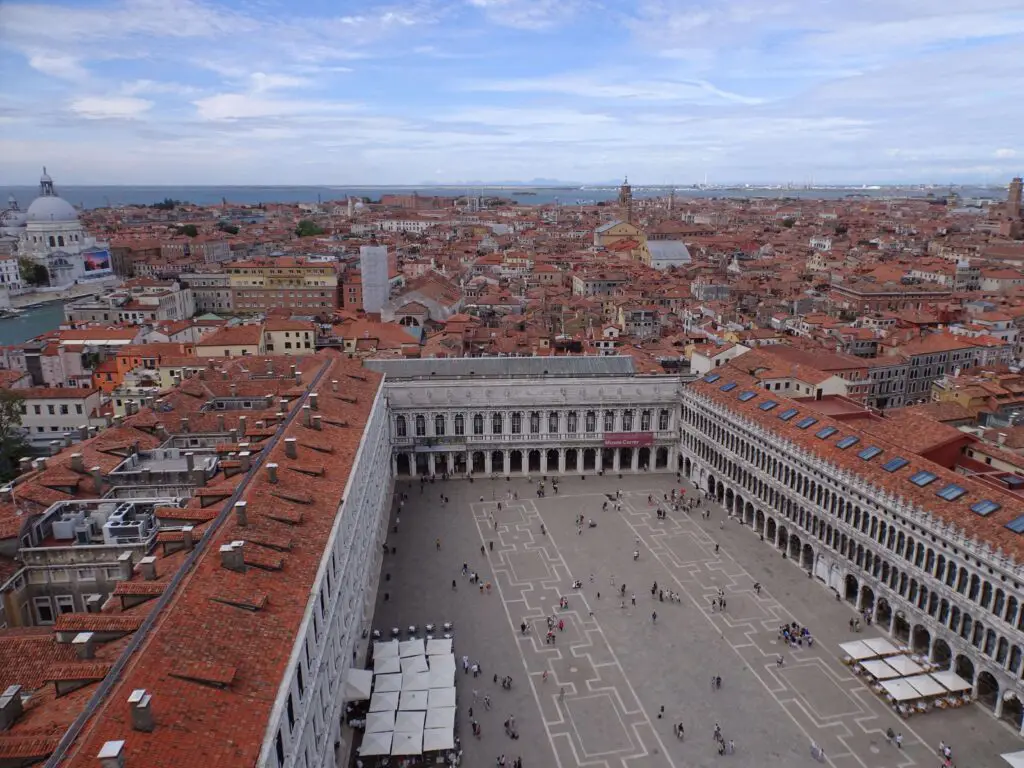
How to get to St. Mark’s Basilica?
The Basilica is slap-dash in the centre of Venice at the eastern end of St. Marks Square. The Square can be reached in about half an hour by foot from the train station. You can also reach the Square by Vaporetto (Water Bus). Many Lines stop at St. Mark’s Square, among them Line 1 and the faster Line 2. You can check the connections and times online here.
Is there a dress code for St. Mark’s Basilica?
Indeed, modest closing is required. This means covered shoulders and knees (i.e. no shorts or mini-skirts).
Storing bags at St. Mark’s Basilica
Something else to know is that bigger bags, backpacks and suitcases are not allowed in the Basilica. You can store bags at the Ateneo San Basso theatre directly to the north of the Basilica for free. As it opens half an hour after the Basilica at 10am, I recommend leaving bigger bags at your accommodation, if possible. Otherwise you certainly can’t beat the crowds.
Where to go next
Padua, a charming university city that is home to a series of beautiful 14th-century frescoes
Vicenza, every architecture lover’s dream destination
Verona, setting of the most famous love story of all time
